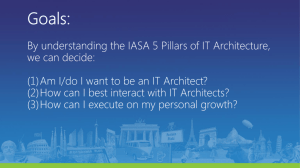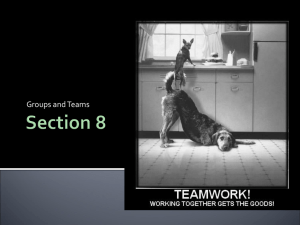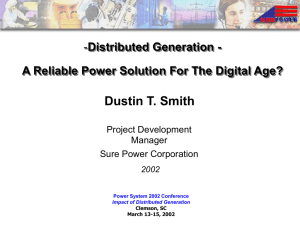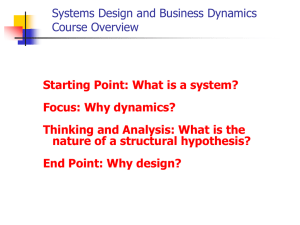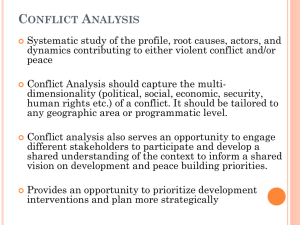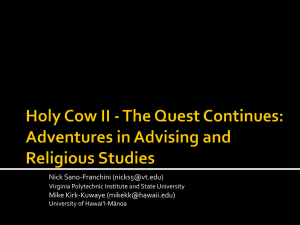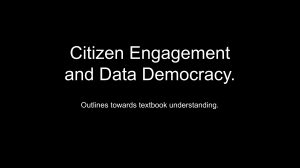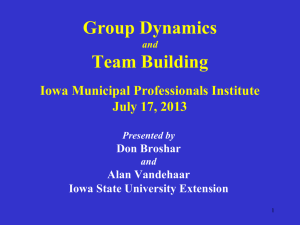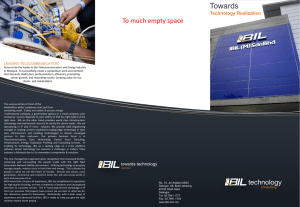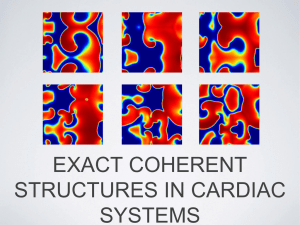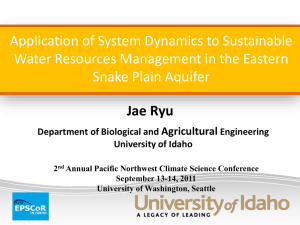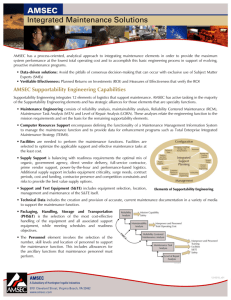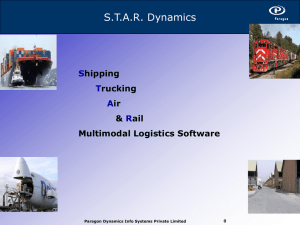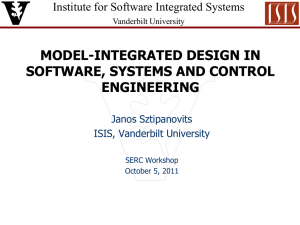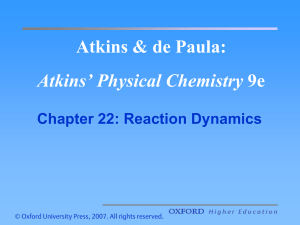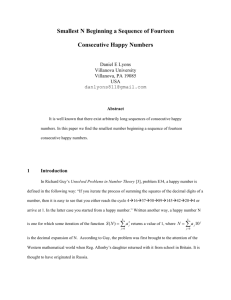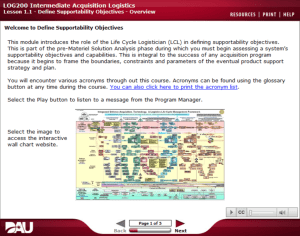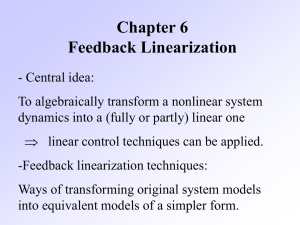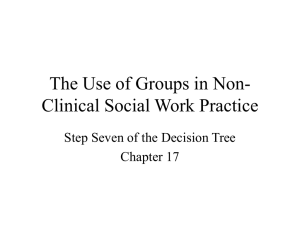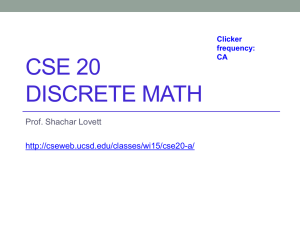Five Pillars of IT Architecture
advertisement
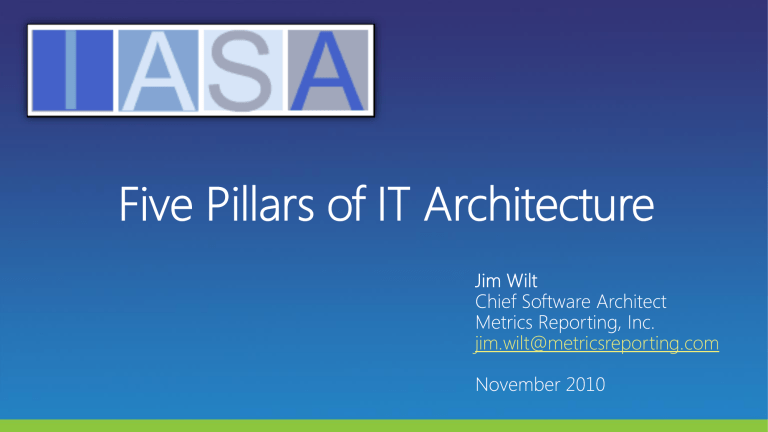
jim.wilt@metricsreporting.com Distinguished Fellows • Scott Ambler, IBM • Len Bass, Carnagie Mellon University/SEI • Grady Booch, IBM • Paul Clements, SEI/Carnagie Mellon University • Miriam Grace, Boeing • Richard Hubert, Hubert & Associates GmbH • Max Poliashenko, CCH, a Wolters Kluwer business • Nick Rozanski, Marks and Spencer • Roger Sessions, ObjectWatch • Oliver Sims, Sims Associates • Jeff Tash, Flashmap Systems • Eoin Woods • Angela Yochem, Dell Qualitative Analysis Quantitative Analysis Asset Creation Focus Groups from Top Industry Architects 7000 Members Surveyed “as-is” + “to-be” Current State Future State IEEE 1471 ITABoK Business Technology Strategy Human Dynamics Quality Attributes IT Environment Design Role Specializations Enterprise Architecture Software Architecture Infrastructure Architecture Foundation Body of Knowledge Business Technology Strategy Our Focus Today Foundation (5-Pillars) IT Environment Quality Attributes Design Human Dynamics Information Architecture Business Architecture *Function: noun Date: 1555 1 : the art or science of building; specifically : the art or practice of designing and building structures and especially habitable ones 2 a : formation or construction resulting from or as if from a conscious act <the architecture of the garden> b : a unifying or coherent form or structure <the novel lacks architecture> 3 : architectural product or work 4 : a method or style of building 5 : the manner in which the components of a computer or computer system are organized and integrated The software architecture of a program or computing system is the structure or structures of the system, which comprise software elements, the externally visible properties of those elements, and the relationships among them. - Bass, Clements, and Kazman. Software Architecture in Practice 2nd ed, Addison-Wesley 2003 Enterprise architecture is the organizing logic for business processes and IT infrastructure reflecting the integration and standardization requirements of the firm’s operating model. - MIT Center for Information Systems Research, Peter Weill, Director, as presented at the Sixth e-Business Conference, Barcelona Spain, 27 March 2007 The person that does business modeling from an IT perspective? The person that leverages the right services and providers? The person that selects a project’s frameworks and products? The person that drives a quick, iterative process for creating code? The person that does advanced engineering and design? Business Technology Strategy Business Technology Strategy Example Case Study Business Technology Strategy IT Environment IT Environment Determine Goals, Alternatives, and Constraints Evaluate Alternatives and Risks Establish Requirements Design Creation Budget 4 Budget 3 Budget 2 Budget 1 Prototype 1 Prototype 2 Prototype 3 Prototype 4 Program Implementation System Test Release to Customer Plan Develop and Test Plan Voice of the Customer Testing Scenarios New User Inputs Bugs New Version System Metaphor Architectural Spike Release Planning Uncertain Estimates Process Iteration Acceptance Testing Confident Estimates Next Iteration Spike Next Release IT Environment Best if you are familiar with: Buy • Industry trends • Leaders in the specific application space and why they are leaders • Benefits and limitations of various methodologies and technologies Build Waterfall Agile • Methodologies and technologies currently in use (and why) • How to gage supportability, impacts on operations, etc. (TCO) Interoperability Stand alone Quality Attributes Quality Attributes Usage: Development: • • • • • • • • • • Usability Localization Accessibility Personalization Customizability Manageability Maintainability Supportability Extensibility Flexibility Operation: • • • • Performance Reliability Availability Scalability Security Quality Attributes Number of 9’s Yearly Downtime 3 Nines (99.9%) ~9 hours 4 Nines (99.99%) ~1 hour 5 Nines (99.999%) ~ 5 minutes 6 Nines (999.999%) ~31 seconds 24/7 0 Quality Attributes Flexibility Personalization Localization Maintainability Extensibility Reliability Customizability Availability Accessibility Performance Scalability Security Deployability Observability Supportability Key + P P + + + P P P P P P P P P P P - P P P P P P P P P P P P P P P P P P P P - P P P P P P P P P P P P P P P P - + P P P P P + P P P P P P P P P P P P P P P P P P P P P P P P P P P P P P P P P P P e Operations he lp s hu rts ne ut ra No l ta pp lic ab l Ü imapcts Ü Usability Fle Pe xibi rs lity on al iza Lo tio ca n liz M atio ain n ta Ex ina te b ns ilit Re ibil y lia ity b Cu ility st om Av iza ai la bilit Ac bilit y ce y ss Pe ibil rfo ity r Sc man al ab ce Se ility cu ri De ty pl oy Ob ab se ility rv Su ab pp ilit or y ta bi lit y Development P P P P P P P P P P P P P P - P Design Design Design Human Dynamics Human Dynamics Attribute Managing the Culture Customer Relations Leadership and Management Peer Interaction What does this really mean? Politics – understanding of the impact of human culture executing as a culture change agent. Understanding the psychological dynamics & managing stakeholder & consumer expectations against the business strategy. Mentoring and guiding those who can benefit from your skills, knowledge, and experience. Playing well with others by being responsive to their needs by understanding the psychology of interpersonal human interactions. Collaboration and Negotiation More Politics – the psychology of human collaboration & networking as well as strategies & methods for working together to reach agreement. Presentation Skills Understanding your audience and presenting/communicating to them appropriately. Writing Skills Quality over quantity in techniques & methods for formal & informal compositions, especially with regard to technical documentation. Human Dynamics Download Foundation 1 Awareness Associate 2 Basic Information Demonstration 3 Individualized Knowledge 4 Practice 5 Delivery 6 Connectivity of Ideas 7 Enterprise Level Leadership 8 Industry Mentorship 9 Research 10 Industry Leadership Professional Master http://www.iasaglobal.org IT Architect Skills Assessment Architecture Foundation in 30-Days http://wiltjk.wordpress.com The Platinum Rule: Discover the Four Basic Business Personalities and How They Can Lead You to Success Peter Stasinopoulos, Michael H. Smith, Karlson 'Charlie' Hargroves, Cheryl Desha, Whole System Design: An Integrated Approach to Sustainable Engineering, Earthscan Publications Ltd. (January 2009) Innovation: The Five Disciplines for Creating What Customers Want Having Trouble with Your Strategy? Then Map It Blue Ocean Strategy: How to Create Uncontested Market Space and Make Competition Irrelevant The Total Solution Life Cycle ARCast.TV Special - Jim Wilt on Increasing Solution Adoption Success Using Architectural Skills
